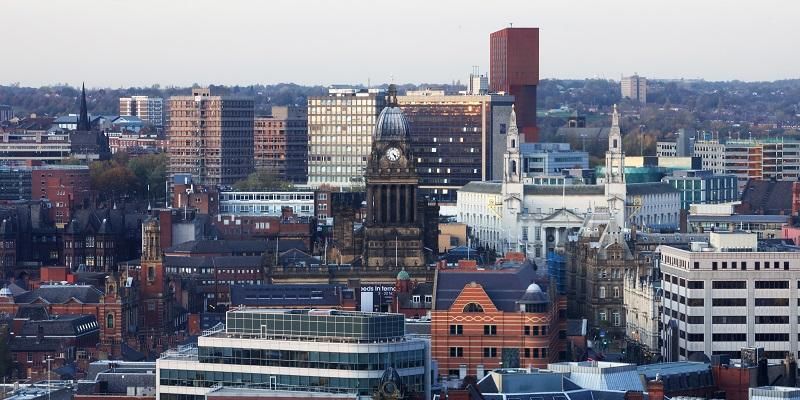
Building standards are failing to ensure offices, shops, public buildings and homes provide healthy ventilation, say leading experts.
In a report on air pollution by England’s Chief Medical Officer, the panel of scientists and engineers describe a system where buildings were complying with the standards at the design phase but there was limited scrutiny to see if those standards were being met as the buildings went up, when in use or if they were adapted over time.
Writing in the Chief Medical Officer's annual report 2022 air pollution, they said: “Whilst new buildings are subject to building standards, these are quite limited in scope and often poorly applied. There is good evidence that many buildings constructed to recent building standards fail to meet the minimum requirements for a number of aspects including ventilation.”
When it came to older buildings, the expert panel noted that: “Most critically these standards are not relevant or applicable to most older buildings in the UK.”
Cath Noakes, Professor of the Environmental Engineering for Buildings in the School of Civil Engineering at Leeds and the lead author of the technical review on solutions for indoor air quality in the Chief Medical Officer's report, said: “For years, we have recognised that people need to be protected from air pollution outdoors.
“Now, there is growing evidence that we need to adopt the same rigorous approach to indoor air quality and acknowledge that it plays a significant role in people’s health and wellbeing through exposure to pollutants and pathogens.
“The technology exists to help keep people safe. We just need to ensure that it is in place, is working effectively and that people are able to use ventilation properly.”
Factors affecting indoor air quality include dust, bacteria, viruses, gases such as carbon monoxide and nitrogen dioxide, volatile organic compounds - gases released from some liquids and solids - and synthetic fibres.
Recent reports from the World Health Organisation, the Royal College of Paediatrics and Child Health and the Royal Academy of Engineering have all argued for measures to improve indoor air quality.
One of the simplest technologies to reduce the health risks from indoor air pollution is good ventilation.
The experts note: “Ensuring good ventilation can reduce people’s exposure to indoor pollutants that cannot be fully controlled. Ventilation is also essential for wider health and wellbeing, thermal and moisture control in buildings and it can reduce people’s exposure to airborne infectious diseases including COVID-19 and influenza.”
Where ventilation cannot be fully effective, it can be supplemented by air cleaning technology, such as HEPA - or high efficiency particulate air - filtration. A HEPA filter can remove particles the size of bacteria and viruses from the air.
With homes, the experts say the focus should be on trying to improve indoor air quality in older homes. 80% of homes in the UK were built before 1990.
“People living in the most deprived areas and in particular in rented properties are more likely to live in homes that are overcrowded with lower energy efficiency, have inadequate heating and ventilation, are poorly maintained, and are more likely to have poor indoor air quality,” said the expert panel.
“Tackling domestic indoor air quality has several specific challenges, including that the responsibility for identifying a problem often lies with the owner who may not have the knowledge, funds, or agency to tackle the problem.”
Building standards
The expert panel recognised the need to improve building standards. They say the standards rely on guidance notes and these had become the de facto standard rather than the minimum requirement. Expert skills were being lost as builders, architects and engineers followed the guidance notes rather than designed from first principles.
Also, changes to standards had been driven by single issue concerns, often at the cost of ventilation and indoor air quality. For example, buildings had been made more airtight to boost energy efficiency.
Professor Noakes added: “The solutions exist to ensure we can improve indoor air quality. We need to strengthen the systems that ensure they are implemented and working effectively. At the same time, we must build our knowledge base to understand the economic and social costs that poor indoor air quality can cause.”
As a participant in SAGE, the Government’s expert scientific panel, Professor Noakes has investigated the way the virus that causes COVID-19 can spread inside buildings, on trains and transport hubs. Professor Noakes has also been at the forefront of efforts to raise awareness about the importantce of good air quality in buildings. Not only can it prevent ilnesss and the spread of respiratory infections, it can boost wellbeing and reduce workplace absenteeism.
She is also a member of the Breathing City network which brings together experts in urban airflow, building ventilation, air quality and health. The core research team is drawn from nine academic institutions and Public Health England.
Other experts involved in the Chief Medical Officer’s report on indor air quality were; Professor Tim Sharpe, University of Strathclyde; Dr Helen Freeman, University of Leeds; Professor Malcolm Cook, Loughborough University; Dr Abigail Hathway, University of Sheffield; Dr Henry Burridge, Imperial College London; Dr Maarten van Reeuwijk, Imperial College London.
Further details
For more information, please contact David Lewis in the Press Office at the University of Leeds by email on d.lewis@leeds.ac.uk.
Top image: Adobe stock